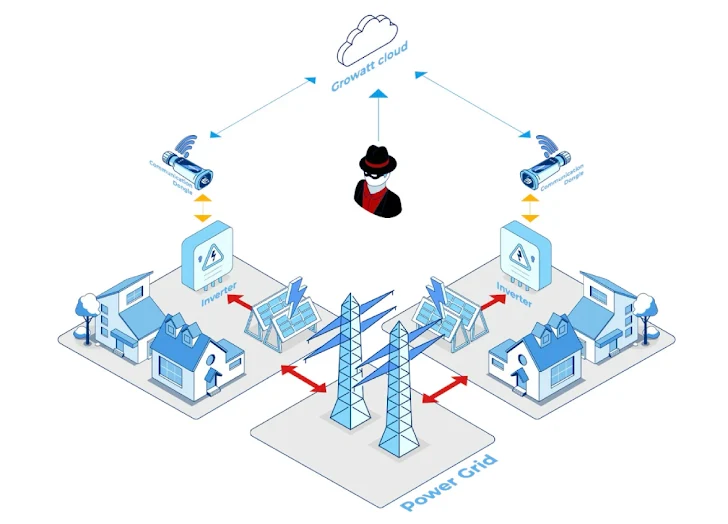Russian Hackers Exploit CVE-2025-26633 via MSC EvilTwin to Deploy SilentPrism and DarkWisp
Have you ever wondered how cyber attackers are able to exploit vulnerabilities in complex systems and carry out attacks undetected? It can be as intriguing as a detective story, with Russian hackers using advanced tactics to stay one step ahead of the law. Today, we’re talking about a sophisticated case involving Russian hackers, CVE-2025-26633 exploitation, and a pretty sneaky pair named SilentPrism and DarkWisp. It’s a tale of intrigue, advanced hacking techniques, and cybersecurity sleuthing.
Russian Hackers Targeting Microsoft Vulnerability
Let’s begin our journey with a group of clever cybercriminals from Russia. These hackers have been exploiting a vulnerability in the Microsoft Management Console (MMC) framework known as CVE-2025-26633. If that sounds daunting, hang tight—it’s simply a term referring to a specific weakness in the system that’s now being leveraged for nefarious purposes. Imagine a pesky leak in your plumbing that, despite quick fixes, keeps getting manipulated by mischievous pests.
Who is Behind the Attacks?
The hackers in question belong to a group called Water Gamayun. They’re also associated with names like EncryptHub and LARVA-208. Quite a set of aliases, right? These guys aren’t your run-of-the-mill internet troublemakers; they’re a serious threat with some clever, sophisticated methods at their disposal. Known to have engaged in a variety of cyber offenses in the past, they’ve now made CVE-2025-26633 their latest weapon of choice.
The Exploitation Journey
With CVE-2025-26633, Water Gamayun has been able to slip through the cracks and deliver some serious payloads using some unusual means. Their method involves deploying payloads by utilizing malicious provisioning packages, signed .msi files, and Microsoft Console files, better known as .msc files. It’s all about creating chaos in the quietest way possible.
But it’s just the beginning. Once inside the system, this gang uses the vulnerability to deploy a pair of backdoors called SilentPrism and DarkWisp. Each of these backdoors plays a unique role in the grand scheme of things.
Introducing SilentPrism and DarkWisp
What makes this malware duo interesting? Let’s say they’re like ghosts in the machine, whispering instructions and collecting data without you even knowing they’re there.
SilentPrism: The Ghost With a Plan
SilentPrism is like having something sinister watching over your digital shoulder. This malware sets up shop in the host system, paving the way for persistence and consistent remote control. Not only does it command and control while evading detection, but it also uses advanced anti-analysis techniques. Think of it like the ultimate sneaky eavesdropper, never announcing its presence until the damage is done.
DarkWisp: The System Sneaker
If SilentPrism is the ghost, DarkWisp is its accomplice. DarkWisp doesn’t just watch—it sneaks around, performing system reconnaissance, stealing data, and transmitting it back to its creators. Through clever programming, it manages to evade detection while continuously accepting commands over a TCP connection. It’s like giving a mischievous sibling the remote to your life and hoping they don’t screw things up too badly.

The Attack Chains and Compromised Systems
How do they pull this off? Let’s break down the attack chain for you.
Crafting the Attack
First, Water Gamayun delivers a custom-tailored package designed to deceive the system. It’s like mailing someone a seemingly innocent-looking parcel that’s, in fact, dangerous. These deceptive packages come in the form of signed Windows Installer files (.msi) and provisioning packages (.ppkg), masquerading as legitimate applications like messaging and meeting software, including DingTalk, QQTalk, and VooV Meeting.
The PowerShell Scheme
Once the legitimate facade is dropped, a PowerShell downloader is activated, further exploiting the host system by fetching and executing the next-stage payload. Think of a harmless-looking plant, suddenly sprouting fangs and targeting every device in its vicinity.
The Clever Payload: Rhadamanthys Stealer
Now, let’s meet Rhadamanthys, a commodity stealer carefully integrated into Water Gamayun’s operation kit. Named after the mythical judge of the dead, it’s as spooky as it sounds.
Weaponizing CVE-2025-26633
Rhadamanthys is enabled through the strategic deployment of the MSC EvilTwin loader. This sophisticated piece of malware uses the mentioned vulnerability to trigger a malicious .msc file. And once that process is initiated, it’s like giving the stealer an open door to grab all the data your system holds dear—without leaving a trace.
What Does Rhadamanthys Steal?
It’s not just about grabbing credentials; Rhadamanthys can pull an extensive range of data. From Wi-Fi passwords and Windows product keys to clipboard history and session data, nothing is safe. Rhadamanthys even targets files related to cryptocurrency wallets by identifying keywords and extensions. If data had a fragile “handle with care” label, this would be the equivalent of snatching it off and running away cackling.

The Stealer Variants: Variations on a Theme
Although Rhadamanthys is a vital part of the arsenal, Water Gamayun doesn’t stop there. They’ve diversified their selection with some notable stealer variants.
Meet the EncryptHub Stealer Family
These stealer variants (A, B, and C), crafted by modifying the open-source Kematian Stealer, are fully featured and ready to do some nasty work. Like a family business with each member having a role, these stealers grab as much sensitive information as possible. Whether it’s details on your installed software, network adapters, running applications, or even specific files matching search criteria, it’s ready to swoop down and collect.
Living-Off-The-Land Attack with LOLBin Techniques
One of the novel techniques employed in this campaign is using the “runnerw.exe” process launcher as a proxy in executing remote PowerShell scripts. It’s called a Living-Off-The-Land Binary (LOLBin) technique, showcasing just how crafty these perpetrators can be. They leverage existing trusted processes for malicious purposes, making them harder to detect.
Cyber Defense: Understanding Your Threats
Faced with such clever adversaries, what’s a digital citizen or organization to do? The first step is understanding the scope of the threat.
Defense Strategies and Recommendations
To defend against these calculated cyber intrusions, preventive action should be taken. This includes proper patch management, ensuring security updates are regularly applied, even in the vast labyrinth of systems that power an organization. It’s like giving your digital immune system a steady stream of booster shots.
Employing intrusion detection systems that can notice anomalous activity and recognizing the signs of a cyber heist in progress is equally critical. Ensure that your security solutions are capable of recognizing and disposing of modern threats rather than merely legacy issues.
Employee Awareness and Training
Moreover, training employees to recognize potential phishing attacks can equip your human firewall to recognize and report attacks before they can escalate. End users are often targeted as weak links, so turning them into informed defenders is crucial.

Closing Thoughts
In the ever-evolving landscape of digital warfare, the case of Water Gamayun is a reminder of the relentless creativity of threat actors. By exploiting vulnerabilities like CVE-2025-26633 and using cunning payloads such as SilentPrism and DarkWisp, they manage to leave a mark while striving to stay hidden. It’s a stark reminder that cybersecurity isn’t a one-time upgrade but a continuing journey of vigilance, adaptation, and innovation.
By staying informed and prepared, you can transform from a passive observer into an active participant in securing your network’s future. Think of it as enrolling your digital world in a self-defense class, ready to kick the hackers to the curb.



